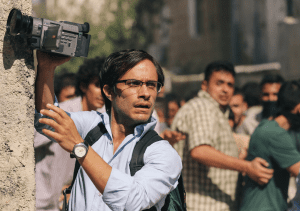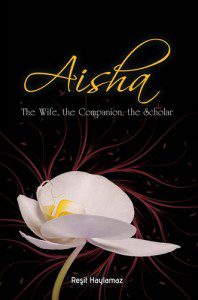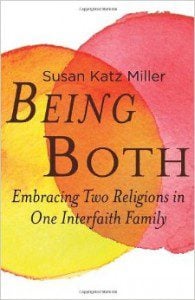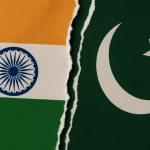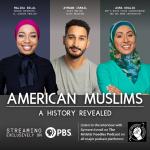 |
|
Muslims on my mind
|
My Name is Khan, the new film by Indian director Karan Johar, shows that Bollywood has taken more than a few cues from Hollywood lately. Popular Indian cinema has embraced the notorious Tinseltown tradition that trades in disempowering stereotypes of African Americans. This film, in particular, is representative of how the African-American Muslim experience remains neglected by two important domains that shape public opinion: popular culture and the academy.
The protagonist, Rizvan Khan, was born with a form of autism called Asperger’s syndrome which affects his ability to emotionally connect with his family and loved ones, yet not his ability to feel love and to believe that love is the pathway toward peace and harmony in society. What begins as a story of immigration and (un)expected love takes a series of dramatic turns after 9/11. Islamophobia and racial profiling prove too much for Khan and his blended family: his wife, Mandira, is Hindu and has a child from a previous marriage. His stepson is severely beaten by his classmates because he is believed to be a Muslim and dies from his wounds. After losing her son Mandira loses faith in her marriage and demands that Khan leave only to return after he has told the president “My name is Khan and I am not a terrorist.” Despite the odd demand, Khan accepts the challenge and goes on a quest to meet the president, then George Bush.
This voyage leads to an oddly placed and deeply disturbing plot twist in which Khan ends up in a fictional all-black town in rural Georgia. Part of what makes this transition so jarring is that while the film is actually set in the first decade of the 21st century, the town, with its twenty residents and circle of ramshackle shotgun housing, seems more like the deep south in the beginning of the 20th. The stereotypes continue as we meet “Funny Haired Joel” (a reference to his poorly groomed afro) and “Mama Jenny,” modern versions of Buckwheat and Aunt Jemima.
Mama Jenny, in prime mammy form, lovingly mothers Khan when he first arrives, disheveled and smelly, at her house and even offers him her own oversized dress to don after he washes off his traveling funk (perhaps a nod to Tyler Perry?). Both Joel and Jenny are religious people, who pray along with the rest of the town’s residents in a one-room church. They also sing, at the appropriate interval, a stirring rendition of the gospel civil rights anthem “We shall overcome.” The song curiously appears in Hindi earlier in the movie, long before we meet any of the film’s black caricatures.
With spirits raised Khan leaves his poor black folk to continue his journey where he gets picked up, detained, and tortured by the FBI as a suspected terrorist. He is eventually released and when he hears that a Katrinaesque hurricane has hit Georgia he is compelled to return to the town to save Mama Jenny. Once there, he finds the town’s residents hopeless, helpless, and holed up in the church. A news crew that has been tracking Khan’s story has followed him to the small town bringing national attention to its plight. In the absence of the US government, which the film explicitly references, droves of “regular” Americans come to rebuild the town. Our everyman saviors in this context are exclusively white with a few Indian Americans here and there.
In a recent review in the New York Times, a critic claims the film makes a link between Indian immigrants and black Americans. What exactly is this link? Should the viewer understand that the only redemption for an accused terrorist is to save some black people––who are always the “most needy?” Or, as a stand-in for the usual white savior, Indian Americans can also practice that can-do American spirit on the bodies of black people? In this way, My Name is Khan mimics a cinematic standard that flattens black humanity: black people need saviors, black people are saviors, or save yourselves, particularly your women, from dangerous black men.
This standard began with D.W. Griffith’s Birth of a Nation and has become a staple in Hollywood film. Two of this year’s Oscar contenders, Precious and The Blind Side, are the subjects of heated debate over whether these films are simply another reincarnation of tired stereotypes. Yet, because Khan is Muslim, there could have been an interesting link made between him and a community of African American Muslims but black Muslims, along with all other non-Indian American Muslims, are invisible in this film.
The inclusion of black stereotypes, coupled with the clear erasure of African American Muslims, not only makes this film even more egregious but also underscores a frequently missed opportunity. My Name is Khan repeats a mistake found in numerous scholarly articles and primetime news specials alike: American Islam is an immigrant story and therefore has no history before 1965, and now 9/11 – two junctures in time that are particularly important because of what they mean to Muslim immigrants in the US. 1965 is significant because it marks the end of discriminatory immigration policies and the subsequent influx of educated Muslims from South Asia and the Middle East.
September 11, 2001 stands as a watershed moment in which many immigrant Muslims came to the harsh reality that “passing” was no longer an option. But what of other significant moments in American Muslim history? The 18th century histories of enslaved African Muslims such as Omar Ibn Said and Abdul Rahman Ibn Sori. The assassination of Malcolm X on February 21, 1965. The largest mass conversion to Islam in American history facilitated by the late Imam Warith Deen Muhammad, son of Elijah Muhammad, in 1975. Not to mention the rich histories of African Muslim rebellion and ingenuity that black Muslims of Latin American and Caribbean lineage have brought to this country.
What story could Khan have told had he been connected to a legacy of American Muslim life established by African American Muslims, whom the film renders invisible? Perhaps an affirmative – rather than apologetic – statement that is just as cheesy: “My Name is Khan and I am an American.”
Su’ad Abdul Khabeer is an artist-scholar-activist (in no particular order) who believes the details of everyday life hold beauty and the tools for change. A doctoral candidate in the Department of Anthropology at Princeton University, Su’ad’s research interests include youth, race and religion, and popular culture studies. She is also a Senior Project Advisor for PBS documentary, New Muslim Cool. Su’ad has been writing creatively since her youth and her poetry series “A Day in the Life,” appeared in the anthology Living Islam Out Loud: American Muslim Women Speak. Her publications include Rep that Islam: the Rhyme and Reason of American Muslim Hip Hop (The Muslim World), Black Arabic: Some Notes on African American Muslims and the Arabic Language in the edited volume Black Routes to Islam, and Eid ul-Fitr: It’s a Black Thang, Too featured on TheRoot.com. Su’ad is currently a fellow in the Department of Black Studies at the University of California, Santa Barbara.


